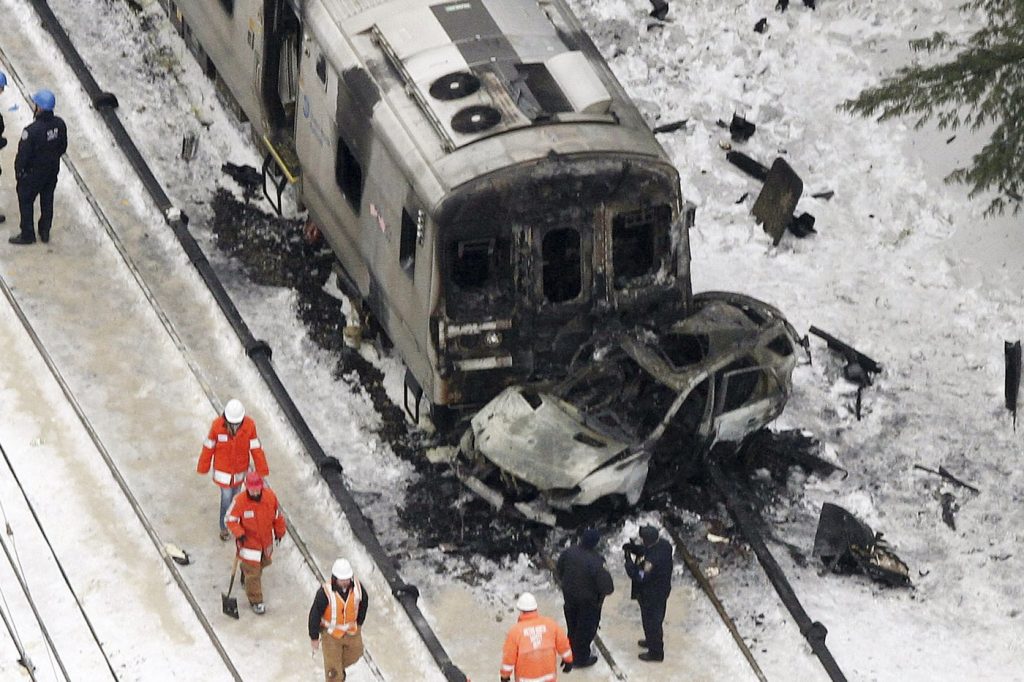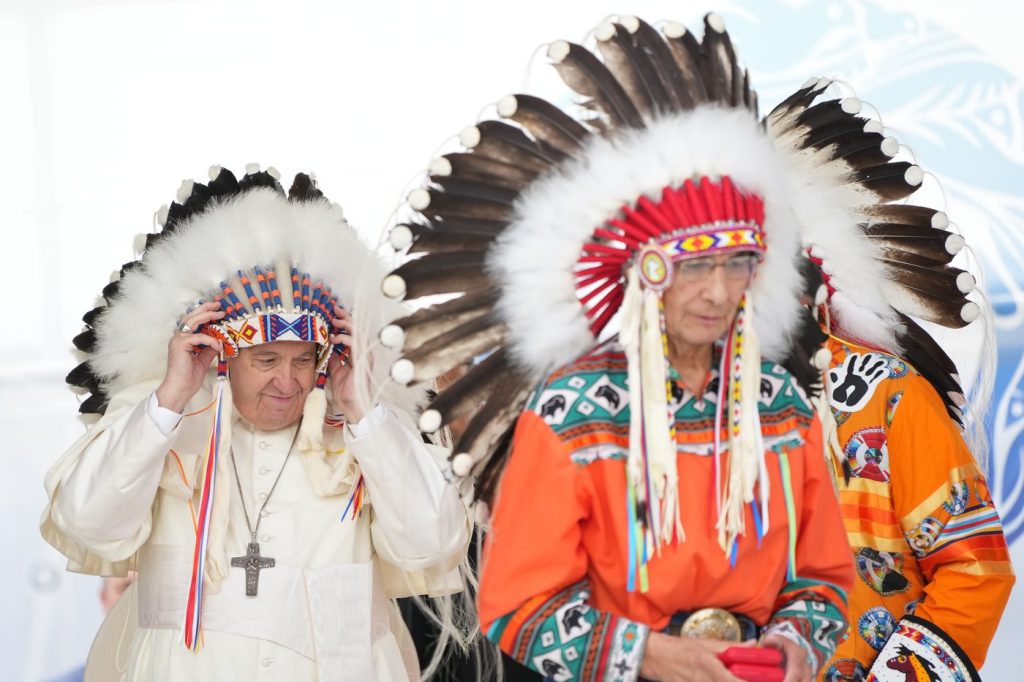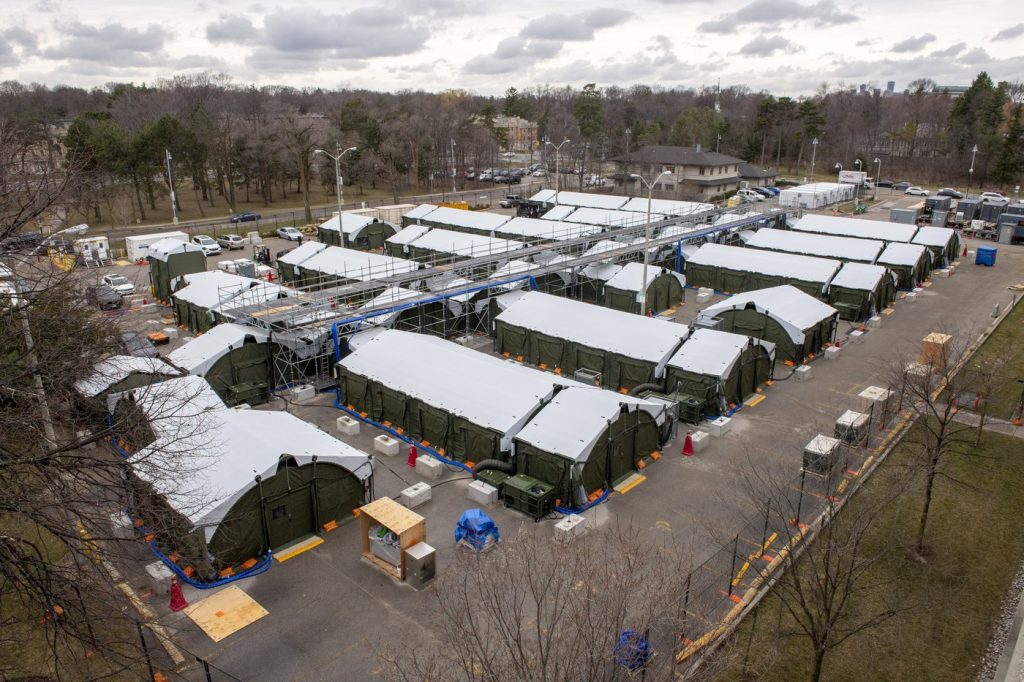Jury faults NY railroad – mostly – for 2015 crossing crash that killed 6

Posted July 18, 2024 6:07 pm.
Last Updated July 18, 2024 6:56 pm.
A commuter railroad is mostly at fault for a fiery and deadly 2015 collision between a train and an SUV at a suburban New York crossing, a jury has found in a verdict that lays out how the bill for any damages will be split.
The verdict, reached Tuesday, held that the Metro-North Railroad bore 71% of the liability for five passengers’ deaths and the injuries of others, and 63% for the death of the SUV driver whose car was on the tracks. The jury faulted train engineer Steven Smalls, a Metro-North employee, and the railroad’s oversight of the line’s electrified third rail.
The jury in White Plains, New York, also found SUV driver Ellen Brody 37% at fault for her own death and 29% for the passengers’ deaths and injuries.
Any damages will be determined at a future trial. No date has been set as yet.
Andrew Maloney, a lawyer for some of the roughly 30 injured passengers, suggested that damages for all the deaths and injuries could run into the hundreds of millions of dollars.
He and another attorney for the injured passengers, Ben Rubinowitz, said Thursday they were pleased with the verdict.
“Hopefully, Metro-North will really manage passengers’ safety better from now on,” Rubinowitz said.
The Metropolitan Transportation Authority, which runs the railroad, disagrees with the verdict and is “considering all legal options,” spokesperson Aaron Donovan said.
A lawyer for Brody’s family said he was pleased that the jury agreed that the railroad and engineer were negligent. But he was disappointed at how much blame was apportioned to her.
“When you get into the facts of the case, she really didn’t do anything wrong,” attorney Philip Russotti said.
Messages seeking comment were sent to attorneys for the engineer and others in the complicated case.
A Metro-North train crashed into Brody’s SUV during the evening rush hour on Feb. 3, 2015, at a grade crossing in Valhalla. It’s about 20 miles (32 km) north of New York City.
Brody, a jewelry store employee headed to a business meeting, had driven onto the tracks while navigating backed-up traffic in the dark in an unfamiliar area. When the crossing gate arm came down onto her SUV, she got out, took a look at the car, got back in and drove further onto the tracks.
The train engineer hit the emergency brake three seconds before the collision, but the train smashed into Brody’s SUV at about 50 mph (80 kph) and pushed it down the track.
A chunk of the railroad’s electrified third rail was ripped off the ground, pierced the SUV’s gas tank and sliced into the train’s first passenger car, carrying flaming debris.
“It was like a spear that was on fire,” Rubinowitz said.
The National Transportation Safety Board found that the design of the power-providing third rail played a role in the deaths and injuries. The board said there was a potential safety problem in the railroad’s lack of a “controlled failure” mechanism that would split up third rails in such situations.
The NTSB concluded that Brody’s actions were the probable cause of the wreck. But her family and attorney maintain that she was thrust into danger by inadequate warning signs, a badly designed crossing, a traffic light that left too little time for cars to clear the tracks ahead of oncoming trains, and the engineer’s failure to slow down as soon as he spotted the reflection of something dark on the tracks ahead.
“All she needed was two or three more seconds” to get across the tracks, Russotti said by phone Thursday.
The injured passengers’ lawyers argued the engineer bore more responsibility than Brody did.
“We kept it very simple: He had the obligation to slow down,” Rubinowitz said by phone.
Smalls, the engineer, testified at the trial that he didn’t know what the reflection was, according to LoHud.com. He told jurors he blew the horn, instead of immediately pulling the brake, for fear that an abrupt halt might hurt passengers.
“I have to relive this every day of my life,” said Smalls, who was injured in the crash. He settled with Metro-North for $1 million in 2019, according to LoHud.com.
The settlement galled the injured passengers, Maloney said.
“It was pretty insulting that the guy who was partly responsible for the collision got paid a substantial sum several years ago, and the injured passengers have, so far, received nothing,” he said by phone.
Jennifer Peltz, The Associated Press








